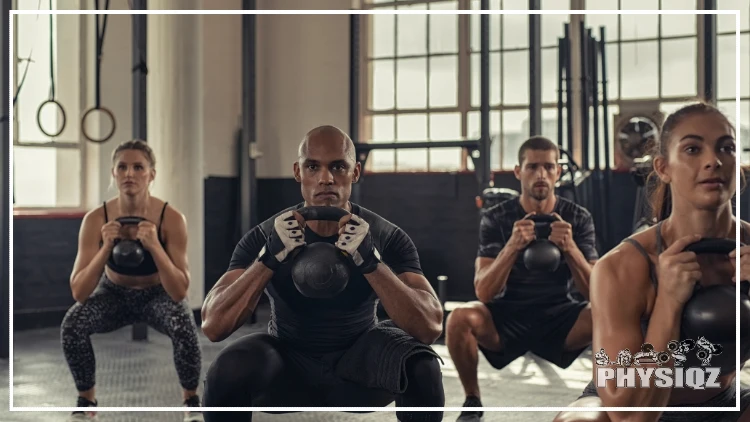
Squat accessory lifts are uniquely beneficial for each individual and are customized based on their specific needs.1 Some people have issues at different portions throughout the squat, whether it be locking out at the top of the movement, having their knees cave in, or being unable to fully extend their lower back.
Using squat accessory exercises can be a huge help for people who are wondering how their squat form is influenced by their genetics. There are a huge amount of squat accessory exercises that can increase a lifter’s ability to properly perform the squat.
Some of these accessories will be broken down into non-barbell or barbell work, detailing the benefits of both, and some beneficial squat assistance exercises for those rehabilitating from an injury or seeking to increase the mind-muscle connection will also be discussed.
Accessory Lifts for Squat & Their Necessity (Accessories for Squats or Squat Accessory Lifts)
Squat accessory work is a necessary part of any lifter’s program, especially when performing a starting strength routine for beginners. It’s not simply enough to add weight and attempt to move it – if proper form is not adhered to, the squat will be ineffective and may ultimately lead to injury.
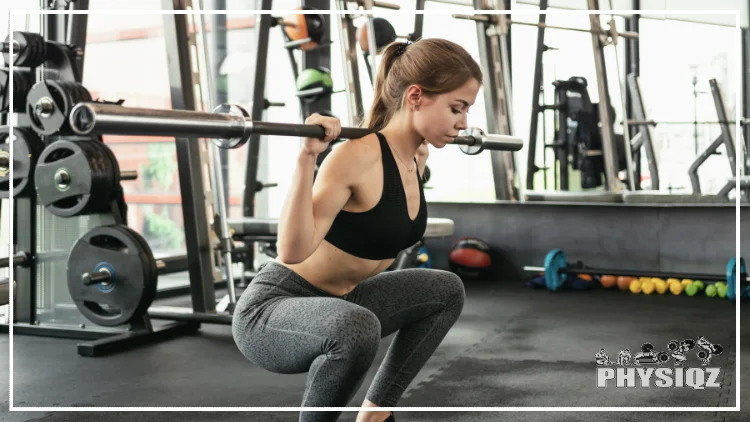
Source: WDnet Studio via Canva.com2
Squat accessories are designed to fill in the gaps where an individual’s weaknesses may exist and, in turn, will help them achieve their goal of performing a squat, or of improving the muscle that is their weak link when it comes to squatting heavy.
Accessories for back squats are variations of the squat that allow a lifter to target specific muscles or ranges of motion that they may be lacking in.
The Best Squat Accessory Lifts To Maximize Gains
While there are dozens of squat accessory exercises out there that can benefit people in different ways, there are two types of lifts to keep in mind: non-barbell and barbell variations. To begin, let’s take a look at some non-barbell squat accessory movements to help eliminate any sticking points.
Non-Barbell Squat Accessory Lifts, Variations & Accessory Movements
As aforementioned, there are quite a few non-barbell squat accessory lifts that can be highly beneficial for people struggling with proper squat technique. These include:
- Pistol squats
- Goblet squats
- Single-leg squats
- Lunges
- Box Jumps
While there are others, these specific movements are ideal because they train a mixture of coordination, flexibility, and strength without requiring a barbell to do so.
Pistol Squats
Pistol squats involve balancing on one leg while squatting down until the hip is below the knee. This can be a great exercise for teaching lifters how to push their hips back and bend at the knee until a significant amount of knee flexion is reached.
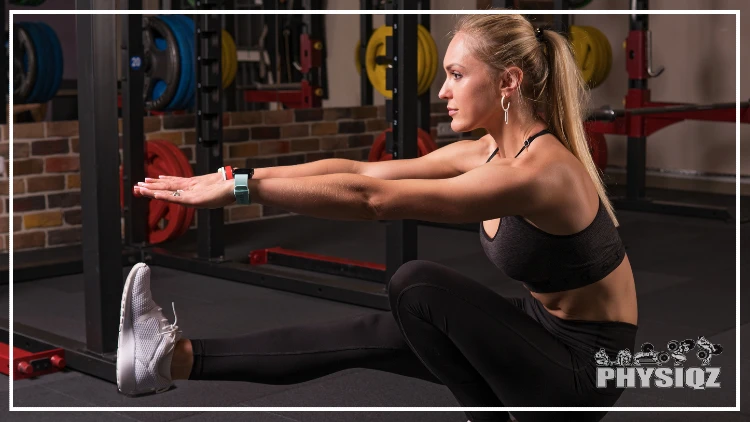
Source: Zdyma4 via Canva.com3
This will also help to build strength in single-leg movements, meaning pistol squats would be considered a unilateral exercise, an exercise where only one side of the body is targeted.
It also comes with a contralateral training effect – research has shown that through unilateral training, muscle size and strength can increase on the contralateral (opposite) side, meaning getting stronger overall is a large benefit of unilateral training.4 Still, the primary reasons include an increased focus on flexibility, developing better overall balance, and ‘evening’ out any muscular imbalances that may exist.
People who have problems with the squat may find the pistol squat particularly beneficial. Weightlifters who do not typically perform unilateral exercises may not realize that they have an imbalance within their legs; doing a pistol squat would expose this issue and help them to target the leg that requires more attention to ensure each leg is equally strong.
Further, while this will help to unify strength in both legs, it will also force the individual to develop a significantly stronger mind-muscle connection in both of their legs. Since the pistol squat is solely focused on stabilizing using one leg, it requires a much better mental connection to that leg than in the squat, where the weight is being used by essentially the leg’s entire musculature.
Goblet Squats
Goblet squats are another great accessory lift for those looking to increase their squat strength. It involves holding a weight (usually a dumbbell or kettlebell) in front of the chest while performing an air squat.
Doing this helps lifters to learn how to keep their torso upright during a squat, which is the main benefit it provides for performing a squat.
The goblet squat can also be beneficial in improving hip and ankle mobility, as well as teaching lifters to sit back with their hips at the bottom of the movement. Additionally, this exercise isolates the quads more than other squat variations since there is a greater degree of knee flexion when compared to most variations.
Another way to increase the benefit of this exercise is by elevating the heels using plates or something similar; training deep squats, as compared to traditional parallel-level squats, has been shown to elicit benefits for the knee extensors’ size and function.5
Single-Leg Squats
Like the pistol squat, single-leg squats are an excellent accessory exercise for those looking to develop a better mind-muscle connection with their legs and improve their balance.
This exercise involves the lifter squatting down on one leg while holding a weight in front of their chest (similar to a goblet squat). The core difference between this and a pistol squat is that in the pistol squat, the unused leg has to be held parallel to the ground while the lifter squats down on one leg.
Meaning, the pistol squat is a significantly more difficult version of the single-leg squat. A single-leg squat can still be conducted with the other leg on the ground, but the other leg should be seen as a way to help keep the body balanced when necessary, not to use both legs to get out of the bottom of the squat.
To say it another way, the single-leg squat is a precursor to the pistol squat, because ultimately, the pistol squat is the hardest version of the single-leg squat.
Lunges
Lunges are another great unilateral accessory exercise to add to any program. This exercise will again target the quads and glutes but in a slightly different way.
The main focus of this exercise is to improve the amount of comfortable knee flexion that one can achieve while also stretching and contracting the hip flexors throughout the movement.
Lunges can be performed in a variety of ways (walking lunges, reverse lunges, etc.), but the main thing to keep in mind is that each variation will still focus on unilateral strength and stability in each leg.
In addition, this exercise can help with overall balance, coordination, and proprioception. Lunges are a great way to bridge the gap between bilateral and unilateral exercises and help lifters focus on improving their overall strength while still teaching them how to focus on each leg individually.
Bulgarian Split Squats (BSS)
The Bulgarian squat method is another unilateral exercise that can help to improve squat strength. This exercise involves placing one foot on a box or bench behind the lifter and then performing a split squat with the other leg.
This exercise requires more balance, coordination, and stabilizer strength than a traditional back squat or even a single-leg squat since one leg is entirely uninvolved in the movement.
At the bottom of the BSS exercise, the lifter’s front leg should be completely bent at the knee, with the back leg’s hip being stretched, engaging the glutes and hamstrings, rather than simply leaning forward. This will help to emphasize the quad of the front leg even more and ensure proper form is being used.
Box Jumps
Box jumps are a great exercise to help increase explosive power along with overall lower body strength. The movement is simple enough – stand in front of a box or elevated surface, hinge at the hips, and bend the knees to parallel, then powerfully extend the legs and jump off of the ground to land on top of the box.
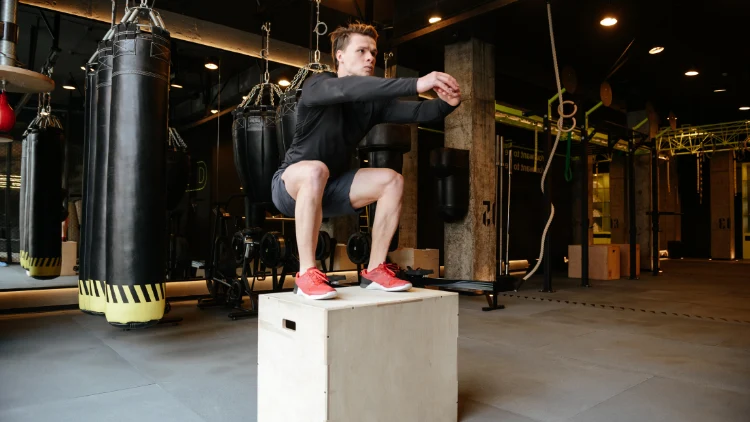
Source: Dean Drobot via Canva.com6
This exercise is primarily beneficial for athletes who want to improve their speed or want to increase overall leg power. Box jumps can help improve an athlete’s ability to quickly jump and change direction, which is important for sports like basketball and football.
For weightlifters who also double as athletes, performing box jumps are a fantastic way to develop more strength and velocity by enhancing leg strength, with the potential to squat more explosively and develop quicker running speeds being some of the main benefits.7
Squat Accessory Lifts & Squat Accessories for Bar Movements (Barbell-Loaded Accessories)
There are quite a few barbell squat accessory movements that can help lifters increase their squat strength and improve their overall form. Back squats are still a great way to build overall lower body strength, as they involve the use of multiple muscle groups and require greater stabilizer strength, but these barbell-loaded accessories will help to target weaker muscle groups that a lifter may want to prioritize.
Front Squats
Similar to the difference between a high bar vs low bar squat, front squats target slightly different muscles than the back squat. They are a great exercise for strengthening the quads but provide an overall similar training stimulus when compared to the back squat when looking at the glutes and hamstrings.8

Source: photology2000 via Canva.com9
The front squat requires lifters to place the barbell across the front of their shoulders, placing their right arm across their left shoulder and their left across their right, almost as if the lifter is dusting off their shoulders. Then, perform a squat as normal, with the added challenge of maintaining an upright torso and keeping the barbell in front of the body.
This squat variation requires a great deal of core strength to keep the torso upright, while also placing the quads under more stress since there is a higher degree of knee flexion involved. That being said, for someone with bad ab genetics, this squat variation is great to target keeping an upright torso and developing an overall more stable core.
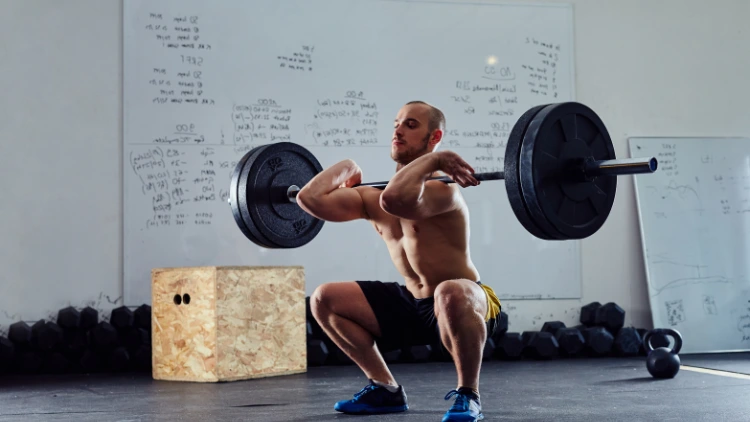
Source: BartekSzewczyk via Canva.com10
Most people use the front squat as a way to provide a greater training stimulus for their quads since the back squat primarily uses the glutes and hamstrings. It should go without being said that placing muscles under extremely heavy loads is a fantastic way to stimulate new growth, and the same holds true for the quads.
No longer does the leg extension have to be the only exercise that prioritizes quad growth.
It targets the quads more than the traditional squat because it changes where the center of mass of the bar is, placing more emphasis on knee flexion, which is where the quadriceps insert, leading to more overall quad stimulation.
Those trying to go heavy on the front squat should consider using knee sleeves if they have any sort of knee pain when performing the movement.
Romanian Deadlifts (RDLs)
Romanian deadlifts (RDLs) are slightly different from traditional deadlifts, but they are still an effective exercise to help strengthen the hamstrings, glutes, and lower back. This exercise involves picking a barbell up and holding it at hip height, starting the movement by bending slightly at the knee and hinging at the hips while lowering the weight to the lowest point that can safely be reached, and then thrusting through the hips to get the weight back up.
RDLs are a great accessory exercise for squats, as they help lifters learn to stay upright and drive their hips forcefully out of the bottom position of a heavy barbell-loaded leg exercise while also putting the hamstring under a significant amount of tension. This helps to improve lifters’ overall balance and stability on the squat.
RDLs can be done with a barbell, kettlebells, dumbbells, or even just with bodyweight, but the barbell version allows for maximal loading to target the hamstrings and glutes to a greater extent than most other exercises can.
For the lifter who struggles to ‘lock out’ at the ending portion of the squat, performing RDLs as an accessory would be highly beneficial.
Hip Thrusts
Hip thrusts are a great accessory exercise for improving overall hip drive, glute strength, and stability. To perform a hip thrust, start in a seated position on the ground with the upper back resting against a bench and the feet firmly planted on the floor three to four steps away from the hips. Roll the barbell over the hip, which is directly over the glutes, and drive up with the hips and squeeze the glutes at the top for a few seconds before lowering back down.
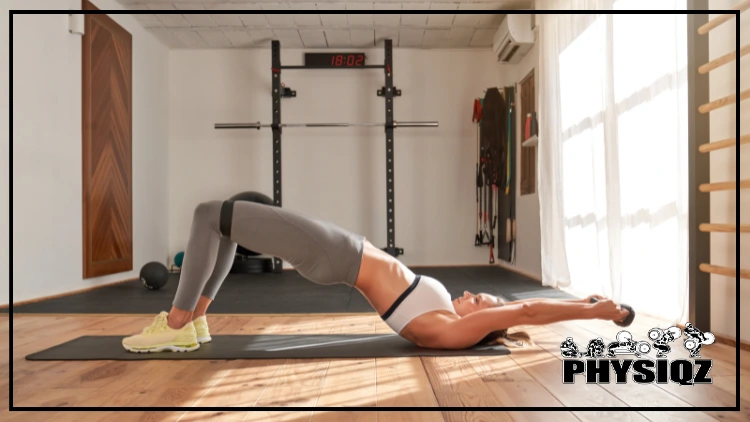
Source: Philippe Degroote via Canva.com11
Some lifters may find it difficult to feel their glutes firing when performing the hip thrust; if that is the case, try only having the heels placed on the ground, with the toes lifted. For most people, this should elicit a much stronger mind-muscle connection and provide a better training stimulus overall.
Hip thrusts are a great accessory for squatting mainly because they load the hips and glutes in a way that no other movement can. Of course, machines like the hip abductor exist that can train the glutes to an extent, but the potential for progressive overload when performing the hip thrust is massive.
For the squat, specifically, hip thrusts are a great way to get better at ‘locking out’ at the top portion of the movement. Imagine performing a squat — the very last bit of the movement involves thrusting the glutes forward, contracting them to get the bar up all the way — that is essentially what the hip thrust is helping with.
Some people also enjoy using the hip thrust as a warmup before squats to increase blood flow and prepare the body for the upcoming workout. Overall, hip thrusts are a great accessory exercise to get better at squatting, and virtually everybody would benefit from performing hip thrusts at least once per week.
Barbell Lunges
Barbell lunges are another great accessory exercise for squatting. Most people are aware of the dumbbell lunge, where a person holds two dumbbells at their sides and steps forward, bending the knee until the back leg is fully extended and nearly touches the ground.
The barbell lunge follows the same exact movement, but instead of dumbbells at the sides, the lifter places a barbell across the back of their shoulders, where the bar is positioned during a squat.
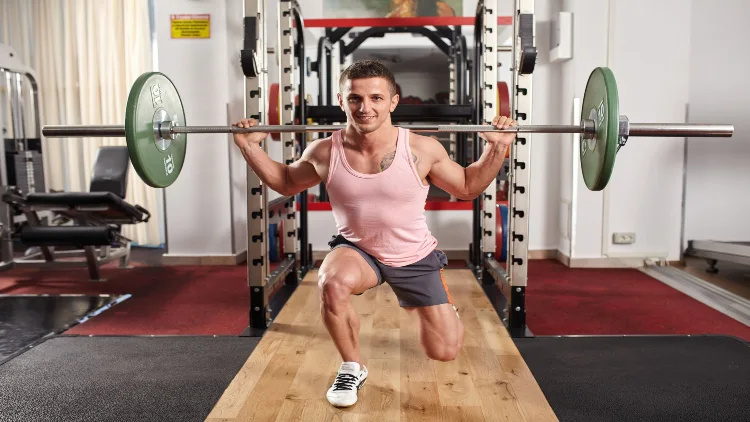
Source: xalanx via Canva.com12
Barbell lunges are beneficial for building a stronger squat and developing better form primarily because lunges are a unilateral movement. Since only one leg is performing the vast majority of the drive throughout it, it requires the body to stabilize in a unique way that it is not used to.
This helps to develop better balance and also trains the body to be strong while only having one leg being used during the lunge.
Performing this exercise before squats helps to open up the hips since they are placed in a stretched position when performing the lunge, and can also be used to help build a stronger mind-muscle connection in the glutes and hamstrings. In a similar way, this means that lunges can be used as a warmup for the traditional back squat to get better hamstring and glute activation throughout it.
That being said, barbell lunges can also be used as a ‘primary’ lift instead of the back squat when a person wants to develop better unilateral leg drive while also desiring to put strength on. Think of this as a similar muscular benefit to the pistol squat, while also putting more stress on the entire leg musculature on the whole.
Pause Squats
Last but not least, pause squats are a great accessory exercise to perform before and even during squatting. The name is not a gimmick — a pause squat is literally a squat where the lifter pauses at the bottom of the squat, when the knees are bent at a 90° angle, holding for a desired amount of time.
Pause squats help to develop strength at the bottom portion of the squat, which is something that many lifters struggle with. At the bottom of the squat, the quads are significantly stretched, and more often than not, portions of movements where the target muscles are maximally stretched are difficult for people because the muscle is weakest at this point.
So, the bottom of the squat can be difficult for people to push out of because their quads are weakest here.
As part of a comprehensive workout routine, this means that pause squats can develop better strength and control through the entire range of motion of the squat, which, more often than not, will help improve overall squat performance.
Programming pause squats into a workout can be done in a few ways. The first way, which is not the greatest use of them, is to solely do pause squats.
For beginner lifters who notice they have lots of issues pushing out of the bottom of the movement, this may make the most sense to do before trying to develop strength on the traditional squat. It is not necessarily the best way to use them because it prioritizes becoming stronger primarily at the bottom of the squat but doesn’t allow for the highest number of repetitions to get a better holistic form.
Most lifters use the pause squat as an additive movement as part of a standard squat routine. Meaning, it can be used as a way to help warm the legs and lower back up to bearing heavier weights — sitting at the bottom of a squat as a warmup can increase blood flow to those regions, making further sets easier.
They can also be used at the end of a squat session to ‘burn out’ the legs; holding an isometric contraction helps to develop maximal force production and provides dynamic performance improvements.13 This means that after heavy squats are performed, deload the weight slightly to ensure that the lifter’s body does not collapse, then perform pause squats to get more blood flow to the area.
This will also help to develop strength at the body’s weakest time – when it is already fatigued, at the bottom of a squat, where the quads are already weakest.
Squat Variations: Powerlifting Focused
Adding any of the above squat accessory lifts to a bodybuilding or powerlifting routine should be more than enough for a person wondering how to aid their goals best. However, one core part that was left out of the above sections was discussing the best ways to add squat accessories to their program.
Repetitions
The first, and arguably most important thing to keep in mind when programming squat accessory exercises, is the number of repetitions that are performed. In the bodybuilding community, a lot of people discuss the ‘best’ amount of repetitions to get the gains that someone wants, whether it is hypertrophic growth or an increase in strength.
Modern research points to a few conclusions:14
- For someone looking to increase strength, sets of 1-5 reps with heavy loads (80-100% of the 1RM) are best
- Those who want to gain muscular endurance should go to the complete opposite end of the spectrum: sets of 15+ reps at 50-60% of the 1RM
- In between, with sets of 8-12 reps at 60-80% of the 1RM, hypertrophy is maximized
All of this being said – a lifter who is new to squatting and wants to prioritize strength gains, should immediately look towards determining their one-rep max so that they can then program their lifting effectively. This is quite simple to do, in reality; go with a friend to the gym and ask them to spot you while trying to find the heaviest weight you can perform on the squat without failing.
This is what a one-rep max (1RM) is.
Once this has been determined, targeting low repetition sets with a heavy load makes the most sense. Since the leg muscles make up such a huge portion of the body’s overall musculature, putting them under a heavy load is a great way to build up strength in them.
But, some people also want to prioritize hypertrophy at the same time.
This is where a mixture of repetitions can come in handy; for the individual who wants a balance of strength training as well as a hypertrophic stimulus, working up to a heavy top set of 1 to 5 reps makes sense. From there, dropping the weight back to do a few working sets of 8 to 12 reps will offer some hypertrophy; in the end, it is ultimately up to the lifter’s individual body goals.
Rest Periods
Resting is another slightly controversial topic in the lifting community. There are many proponents of minimal rest – working the muscle to failure every set, minimizing time in between sets to continue hammering blood into the vasculature, and stimulating as much muscle damage as possible.
Lifters who argue for this typically fall into the bodybuilding camp, people who prioritize hypertrophy over strength.
However, research shows that in general, longer rest periods are better. Researcher Brad Schoenfeld, a very well-known figure in the bodybuilding research community, compared rest periods of 1-minute and 3-minutes to determine which length of rest was better for overall hypertrophy and strength.15
The study used 7 different exercises in the routine, the same between both groups, testing the 1RM of the squat and the bench press before and after the protocol began. What was found is that maximal strength for both the squat and the bench press increased in the long rest group significantly more than in the short rest group.
Even further than that, muscle thickness in the thigh and triceps showed a much larger increase in the long rest group.
While this doesn’t necessarily confirm that there is a causal effect between rest and muscle adaptations, this study provides strong evidence that taking longer rest periods between sets makes the most sense for optimal muscle growth and increasing strength.
For squats, in particular, the heavier a set one performs, the more rest one should have after the set. The heavier a lift is, the more impact there is on the central nervous system (CNS); while performing high repetition, lightweight sets can be good for endurance and cardiovascular health, performing heavy sets with little rest in between can be risky.
It should also be noted that focusing on deep breathing in between, and during, sets of heavy resistance training is extremely important. Research shows that blood pressure (BP) decreases during weight training when breathing with an open glottis, a valve at the top of the larynx, helping to maintain a safe level of BP.16
To sum things up, when a person is performing any compound exercise that uses multiple muscle groups, like in the squat, taking longer rest periods of 3 to 5 minutes is best to prevent injury, allow the central nervous system to recover, and increase muscle strength and size optimally.
Speed Work
Speed work is a great way to increase explosiveness, particularly in lifts like the squat. Speed work involves lifting a submaximal weight (anywhere from 40-60% of the lifter’s 1RM) as fast as possible while still having good form.
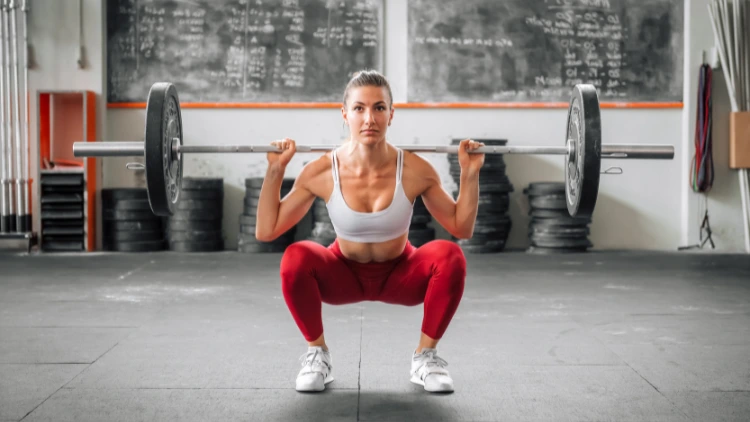
Source: photology2000 via Canva.com17
The idea behind speed work is to train the neural network of the body to become more efficient in lifting a certain weight at a rapid pace. The more efficiently the body can activate multiple muscle groups concurrently, the quicker and stronger one will be able to move that weight.
Speed work is best done with sets of 3 reps at maximum speed, performing upwards of 10 sets with 1-2 minutes of rest in between each set. Although mentioned above that longer rest periods are best for strength and hypertrophy, the goal while performing speed work is to become extremely effective at quickly contracting muscles while maintaining good form.
The most important thing to remember when doing speed work is to keep perfect form throughout the entirety of the movement; both the concentric and the eccentric phases should be done as fast as possible with maximum control, avoiding using momentum at any portion of the movement.
Overall, speed work is a great way to develop explosive power and to perfect form, and when done correctly, can provide some serious muscle gains.
The Best Squat Assistance Exercises for Beginners & Injury Rehabilitation
The above exercises, as aforementioned, are written with powerlifters and current lifters in mind. However, for those who are beginner lifters or are rehabilitating from a leg or lower back injury, it makes entirely more sense to do squat assistance exercises that prioritize building up a base level of strength and mobility to perform the squat in general.
Some of the best squat assistance exercises include:
- Straight leg raises
- Standing hamstring curls
- Wall squats
- Clamshells
Straight Leg Raises
Straight leg raises are a great way to train mobility in the hip flexors and quads, but are primarily recognized as a movement to strengthen the lower abs.
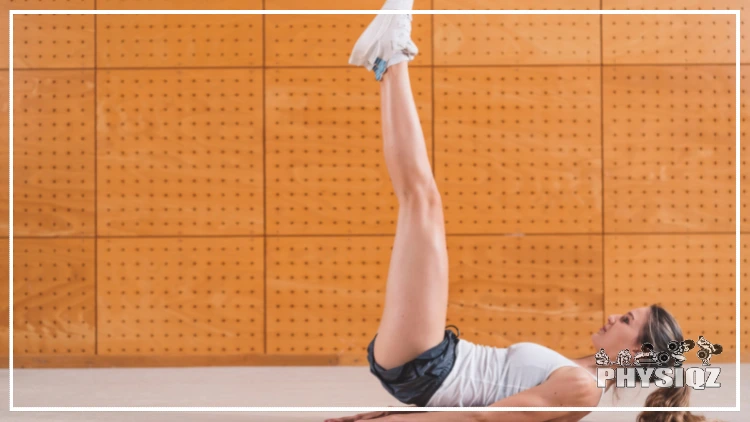
Source: Ziga Plahutar via Canva.com18
To perform this exercise, lay down on the ground with one leg straight up towards the ceiling and the other flat on the ground. Raise the lower leg with the knee bent at a 90° angle and bring it towards the chest, and lower it back down to the ground, straightening it out.
Repeat this with each leg for 10-20 repetitions.
The goal here is not necessarily to build up strength, but it is to get blood flow to the knees and help to develop a better mind-muscle connection. It is also useful to help develop mobility in the hips, which is essential when it comes to performing the squat properly.
Standing Hamstring Curls
Standing hamstring curls are a great way to help develop a better mind-muscle connection in the glutes and hamstrings, both of which are key muscles for squat strength.
The standing hamstring curl is quite an intuitive exercise to perform. Stand on one leg and keep the other off the ground.
Bend the leg that is not placed at the knee and bring the heel as close to the glutes as possible. Hold the position for a few seconds and then slowly lower back down.
Repeat this with each leg for 8-15 repetitions. Avoid using momentum and solely focus on contracting the back of the leg (the hamstring).
For those who can’t perform weighted hamstring curls or any of the above squat accessory lifts, doing standing, bodyweight hamstring curls make a lot of sense.
Wall Squats
Wall squats are great for beginners who may not feel comfortable with doing bodyweight squats yet since wall squats are essentially squats that use the back pressed against a wall as a way to take weight off of the legs.
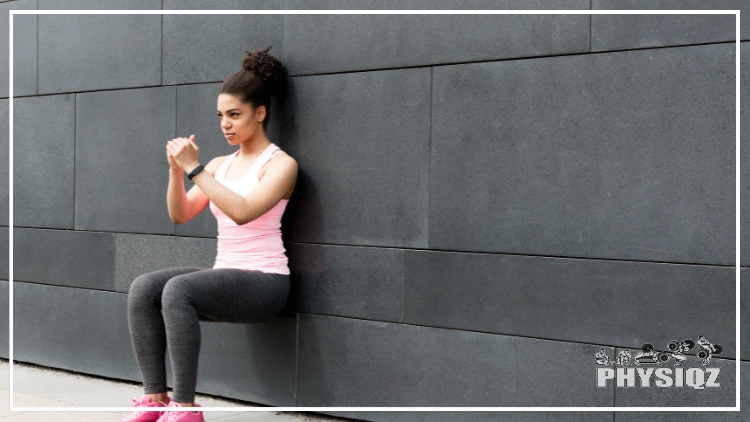
Source: Youngoldman via Canva.com19
Performing this exercise is quite simple: stand against a wall with the back flat, and bend the knees to lower down into a squat position. Proper form requires flat feet and knees in line with the toes to ensure stability.
Hold this position for as long as possible, and then slowly rise back up. Repeat this exercise 3-5 times.
This will help to teach the body how to perform a squat, so wall squats are chiefly beneficial for novice lifters. Luckily, since the back is supported by the wall, this exercise is safe for most people.
Clamshells
Clamshells are a simple yet effective exercise for those who want to gain greater mobility and build up starting strength in their hip abductors, which will help to stabilize the hips when squatting.
To perform this exercise, lay down on one side with legs bent at a 90° angle and feet together. From here, raise the top knee as high as possible.
There should be a noticeable stretch felt around the groin. Hold the position for a few seconds and then slowly lower back down.
Repeat this with each leg for 8-15 repetitions.
These are all exercises that can help a person build up strength and stability in the lower body to eventually performing bodyweight and even weighted squats. As a person progresses with these exercises, they will be able to add weight and have a larger range of motion, eventually leading to the ability to squat with proper form.
However, keep in mind that those rehabilitating from an injury must seek medical advice before attempting any of the above exercises or attempting to squat. It is important to take strength and mobility into consideration, as jumping right back into the gym without proper preparation could lead to complications like abdominal pain or testicular pain.
Squat Accessory Lifts, Accessory Leg Exercises & Auxiliary Lifts for Squat in Sample Routine
Luckily, for those who are curious about how to target specific muscle groups in the legs, it is quite easy to program into a workout routine.
Below are short, simple workouts that are based on the principles discussed above: a squat included in each workout, with repetitions and rest accounted for, as well as squat accessories included to target different parts of the leg. As part of a progressive overload workout plan, these routines are highly effective.
Quad dominant: For those who want to increase overall strength, but want to target developing more defined quads, use this routine.
- Squats: 3 sets, 1-5 reps, 80-95% 1RM, 3-5 minutes rest between sets
- Lunges: 3 sets, 8-12 reps, 60-80% 1RM, 2-4 minutes rest between sets
- Leg Extensions: 2-3 sets, 12-20 reps, 50-60% 1RM, 1.5-2 minutes rest between sets
Glute dominant: This routine will be a lot more intensive on the glutes than most people are used to, but it will almost certainly be effective. Lifters should also aim to have a narrower stance to target the glutes most effectively.20
- Squats: 4 sets, 1-5 reps, 80-95% 1RM, 3-5 minutes rest between sets
- Hip Thrusts: 3 sets, 10-12 reps, 70-80% 1RM, 3 minutes rest between sets
- Hamstring Curls: 2 sets, 12-20 reps, 60-70% 1RM, 1-minute rest between sets (focus on contracting through the glute)
Hamstring dominant: Last but not least, for those who want to get thicker legs, targeting the hamstrings makes a lot of sense.
- Squats: 3 sets, 1-5 reps, 80-95% 1RM, 3-5 minutes rest between sets
- Romanian Deadlifts: 3 sets, 8-12 reps, 70-80% 1RM, 3 minutes rest between sets
- Stiff-Legged DB Deadlifts: 3 sets, 12-15 reps, 60-70% 1RM, 1.5-2 minutes rest between sets
While there are hundreds of squat accessory lifts out there, there are only a few that are best customized to the individual – use the information from this article to help target and prioritize the leg muscles that matter most.
References
1Rido. Canva. Accessed 18 April 2023. <https://www.canva.com/photos/MADdwkKKo0w-people-squatting-with-kettlebell/>
2WDnet Studio. Canva. Accessed 18 April 2023. <https://www.canva.com/photos/MAEV8KQePEI-athletic-girl-workout/>
3Zdyma4. Canva. Accessed 18 April 2023. <https://www.canva.com/photos/MADF85q4ccU-fitness-woman-doing-pistol-squat/>
4Carroll, T., Herbert, R., Munn, J., Lee, M., & Gandevia, S. (2006). Contralateral effects of unilateral strength training: evidence and possible mechanisms. Journal of Applied Physiology, 101(5), 1514-22. <https://pubmed.ncbi.nlm.nih.gov/17043329/>
5Bloomquist, K., Langberg, H., Karlsen, S., Madsgaard, S., Boesen, M., & Raastad, T. (2013). Effect of range of motion in heavy load squatting on muscle and tendon adaptations. European Journal of Applied Physiology, 113(8), 2133-42. <https://pubmed.ncbi.nlm.nih.gov/23604798/>
6Drobot, Dean. Canva. Accessed 18 April 2023. <https://www.canva.com/photos/MACFbz35u_A-athletic-man-jumping-on-box/>
7Novita, N., Harahap, P., Sagala, R., & Pasaribu, A. (2022). Effect of plyometric exercises on limb muscle power in volleyball players. Jurnal SPORTIF: Jurnal Penelitian Pembelajaran, 8(1), 131-144. <https://doi.org/10.29407/js_unpgri.v8i1.17810>
8Contreras, B., Vigotsky, A., Schoenfeld, B., Beardsley, C., & Cronin, J. (2016). A Comparison of Gluteus Maximus, Biceps Femoris, and Vastus Lateralis Electromyography Amplitude in the Parallel, Full, and Front Squat Variations in Resistance-Trained Females. Journal of Applied Biomechanics, 32(1), 16-22. <https://pubmed.ncbi.nlm.nih.gov/26252837/>
9photology2000. Canva. Accessed 18 April 2023. <https://www.canva.com/photos/MAEO_w7A8Yk-muscular-persob-doing-a-front-squat/>
10BartekSzewczyk. Canva. Accessed 18 April 2023. <https://www.canva.com/photos/MADaFUb5ovg-barbell-front-squat-exercise/>
11Degroote, Philippe. Canva. Accessed 18 April 2023. <https://www.canva.com/photos/MAFO1y-rsko-fit-woman-doing-hip-thrusts-in-gym/>
12xalanx. Canva. Accessed 18 April 2023. <https://www.canva.com/photos/MADCO2Wruus-barbell-lunges-in-the-gym/>
13Oranchuk, D., Storey, A., Nelson, A., & Cronin, J. (2019). Isometric training and long-term adaptations: Effects of muscle length, intensity, and intent: A systematic review. Scandinavian Journal of Medicine & Science in Sports, 29(4), 484-503. <https://pubmed.ncbi.nlm.nih.gov/30580468/>
14Schoenfeld, B., Grgic, J., Van Every, D., & Plotkin, D. (2021). Loading Recommendations for Muscle Strength, Hypertrophy, and Local Endurance: A Re-Examination of the Repetition Continuum (S. Lorenzetti, Ed.). Sports (Basel), 9(2), 32. <https://www.ncbi.nlm.nih.gov/pmc/articles/PMC7927075/>
15Schoenfeld, B., Pope, Z., Benik, F., Hester, G., Sellers, J., Nooner, J., Schnaiter, J., Bond-Williams, K., Carter, A., Ross, C., Just, B., Henselmans, M., & Krieger, J. (2016). Longer Interset Rest Periods Enhance Muscle Strength and Hypertrophy in Resistance-Trained Men. Journal of Strength and Conditioning Research, 30(7), 1805-12. <https://pubmed.ncbi.nlm.nih.gov/26605807/>
16Narloch, J., & Brandstater, M. (1995). Influence of breathing technique on arterial blood pressure during heavy weight lifting. Archives of Physical Medicine and Rehabilitation, 76(5), 457-62. <https://pubmed.ncbi.nlm.nih.gov/7741618/>
17photology2000. Canva. Accessed 18 April 2023. <https://www.canva.com/photos/MAFGIRamHb0-sportswoman-doing-barbell-back-squat/>
18Plahutar, Ziga. Canva. Accessed 18 April 2023. <https://www.canva.com/photos/MAEEbRvSVkM-ab-excercise-leg-raises/>
19Youngoldman. Canva. Accessed 18 April 2023. <https://www.canva.com/photos/MADFqVRNH1o-athlete-doing-wall-squat-on-city-street/>
20McCaw, S., & Melrose, D. (1999). Stance width and bar load effects on leg muscle activity during the parallel squat. Medicine & Science in Sports & Exercise, 31(3), 428-36. <https://pubmed.ncbi.nlm.nih.gov/10188748/>